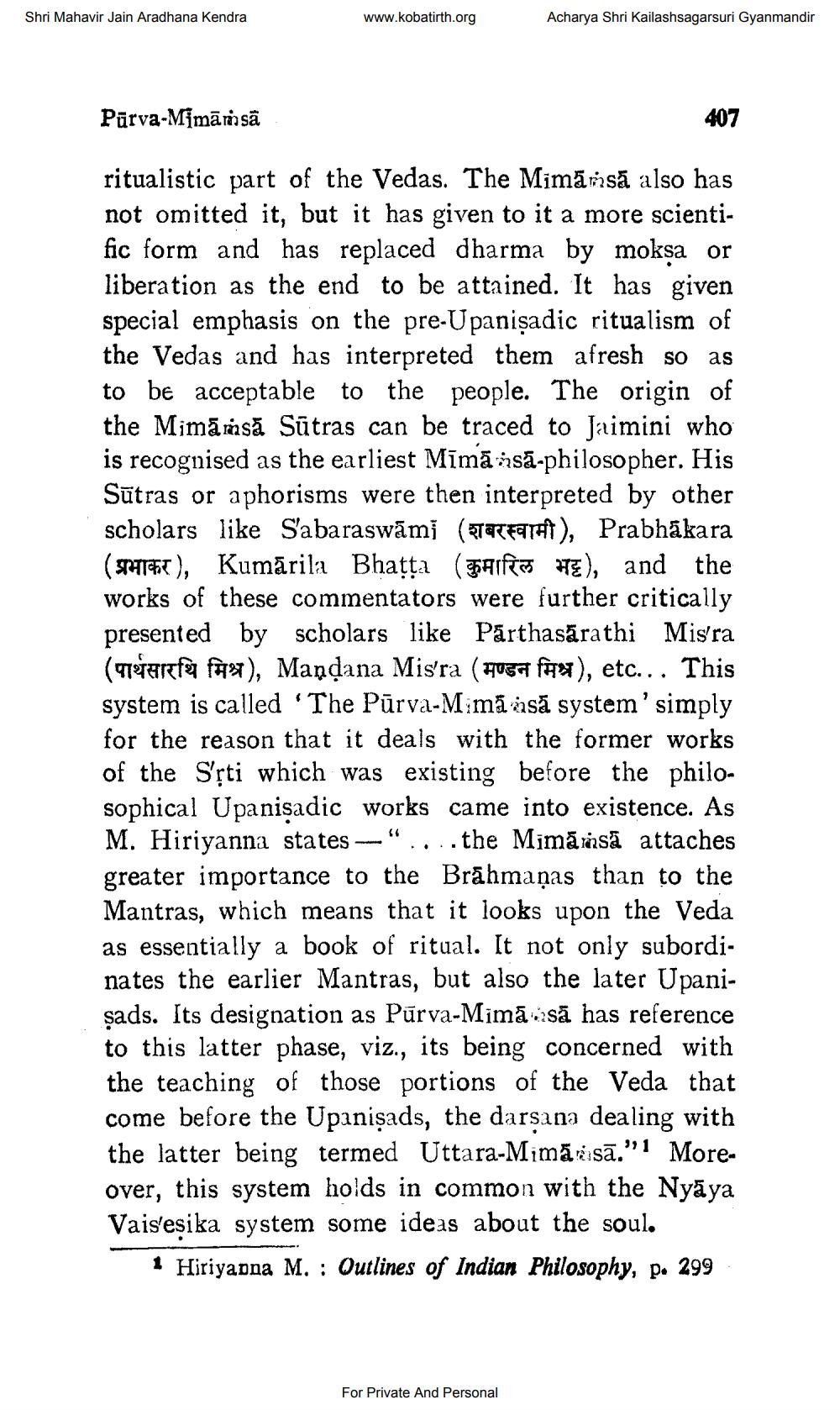________________
Shri Mahavir Jain Aradhana Kendra
www.kobatirth.org
Acharya Shri Kailashsagarsuri Gyanmandir
Pūrva-Mímārsa
407
ritualistic part of the Vedas. The Mimārsā also has not omitted it, but it has given to it a more scientific form and has replaced dharma by moksa or liberation as the end to be attained. It has given special emphasis on the pre-Upanișadic ritualism of the Vedas and has interpreted them afresh so as to be acceptable to the people. The origin of the Mimārasă Sūtras can be traced to Jaimini who is recognised as the earliest Mīmāäsā-philosopher. His Sūtras or aphorisms were then interpreted by other scholars like Sabaraswāmi (TEFTAT), Prabhākara ( STATE), Kumārila Bhatta (Farfeas HE), and the works of these commentators were further critically presented by scholars like Parthasārathi Misra (terarfa füst), Mandana Mis'ra (Huga fs), etc... This system is called 'The Pūrva-Mimá asā system'simply for the reason that it deals with the former works of the Sști which was existing before the philosophical Upanisadic works came into existence. As M. Hiriyanna states --"...the Mimārāsā attaches greater importance to the Brāhmaṇas than to the Mantras, which means that it looks upon the Veda as essentially a book of ritual. It not only subordinates the earlier Mantras, but also the later Upanişads. Its designation as Pūrva-Mimāsā has reference to this latter phase, viz., its being concerned with the teaching of those portions of the Veda that come before the Upanişads, the darsana dealing with the latter being termed Uttara-Mimāsā.”! More. over, this system holds in common with the Nyāya Vais'eșika system some ideas about the soul.
1 Hiriyapna M. : Outlines of Indian Philosophy, p. 299
For Private And Personal




